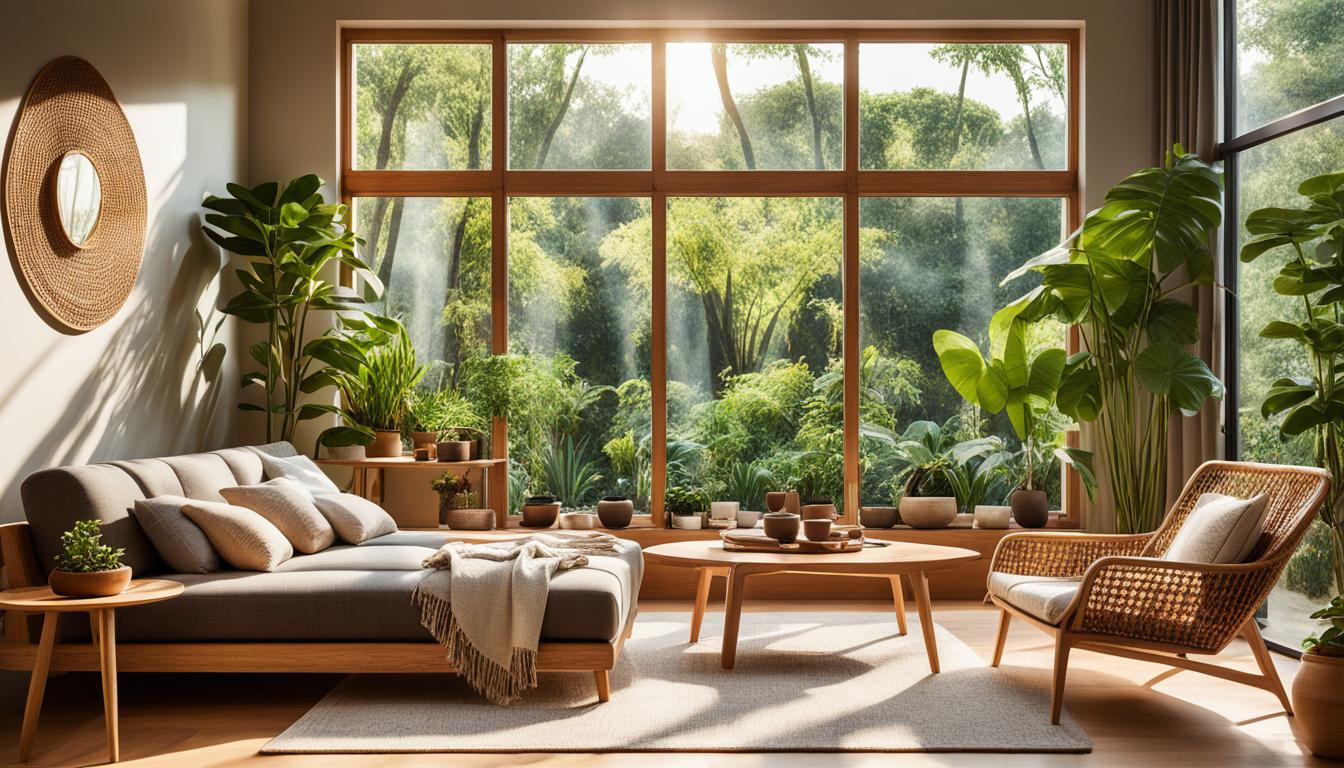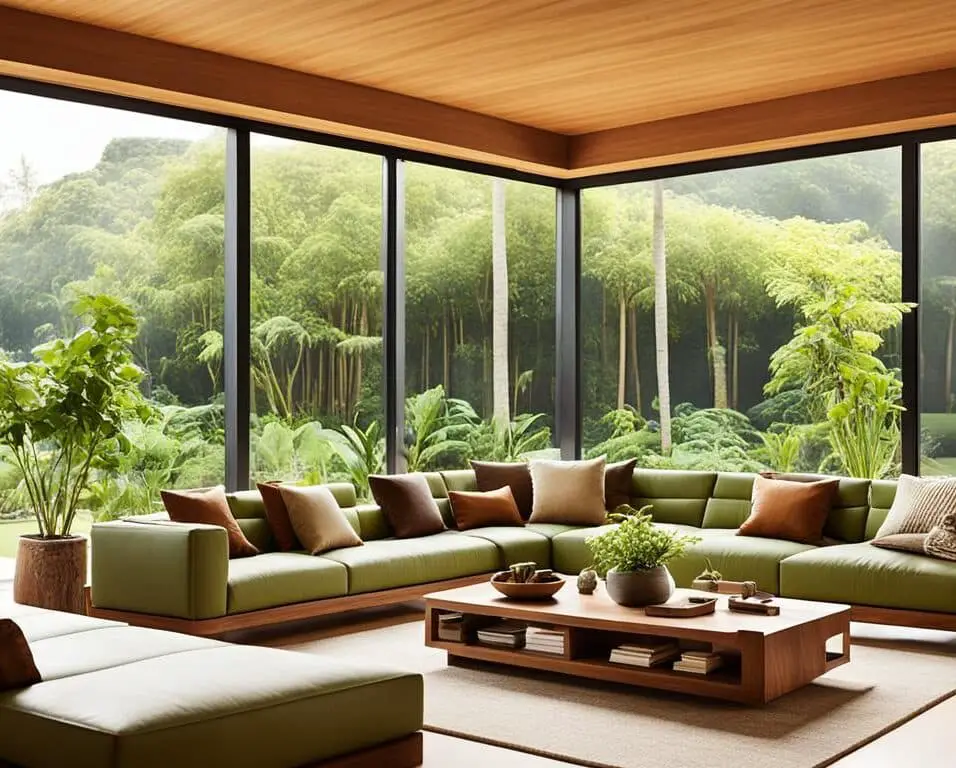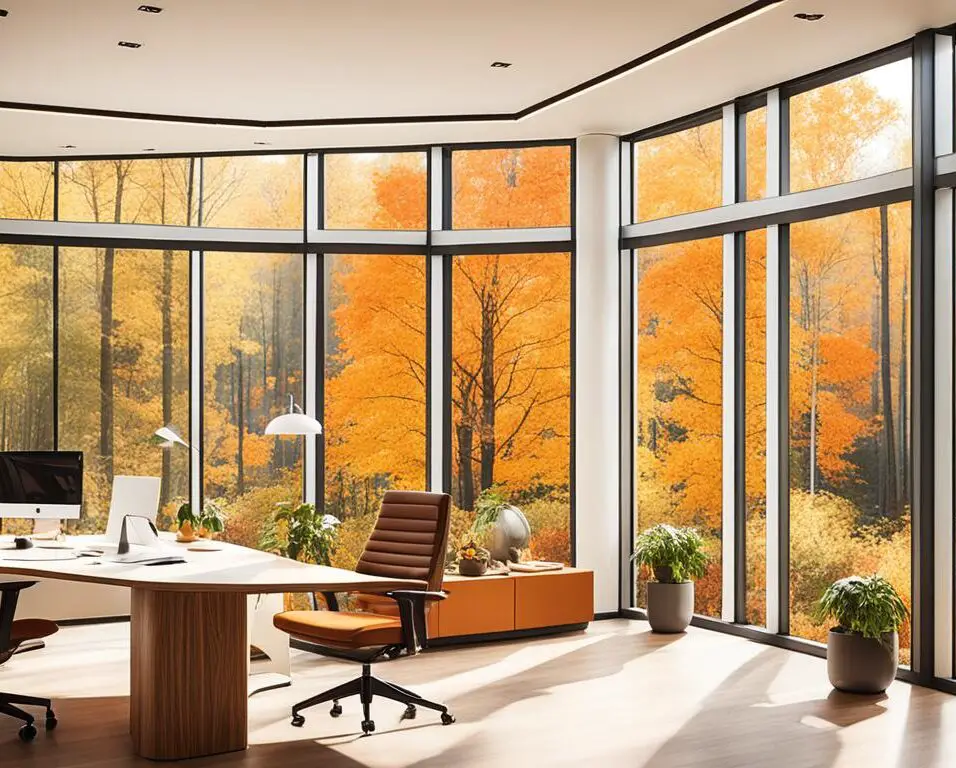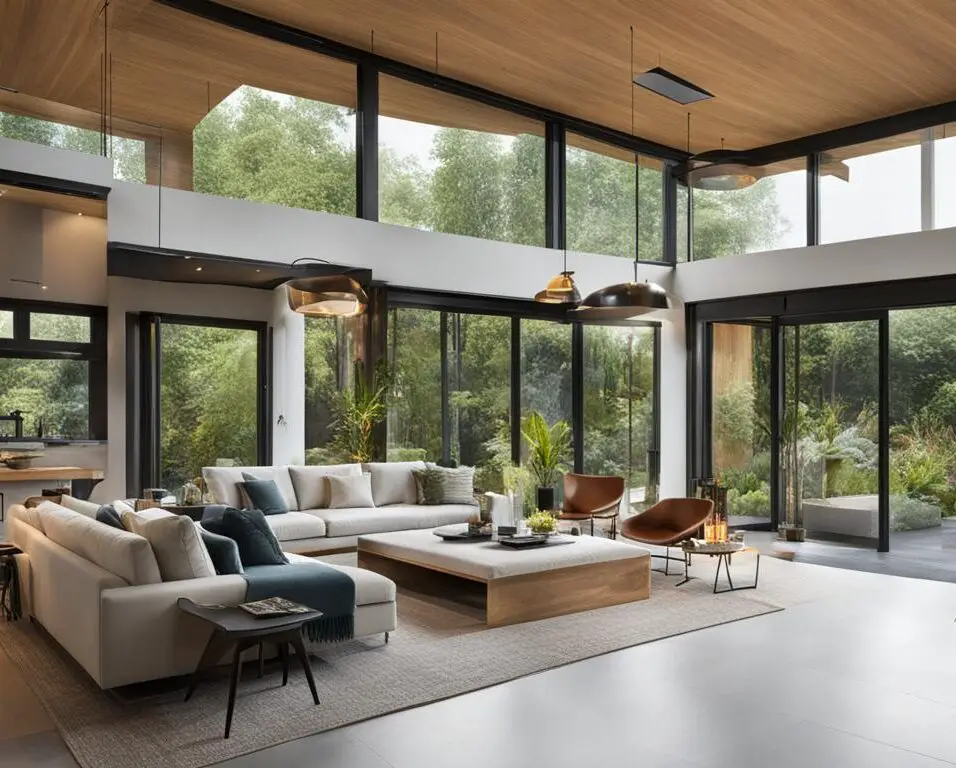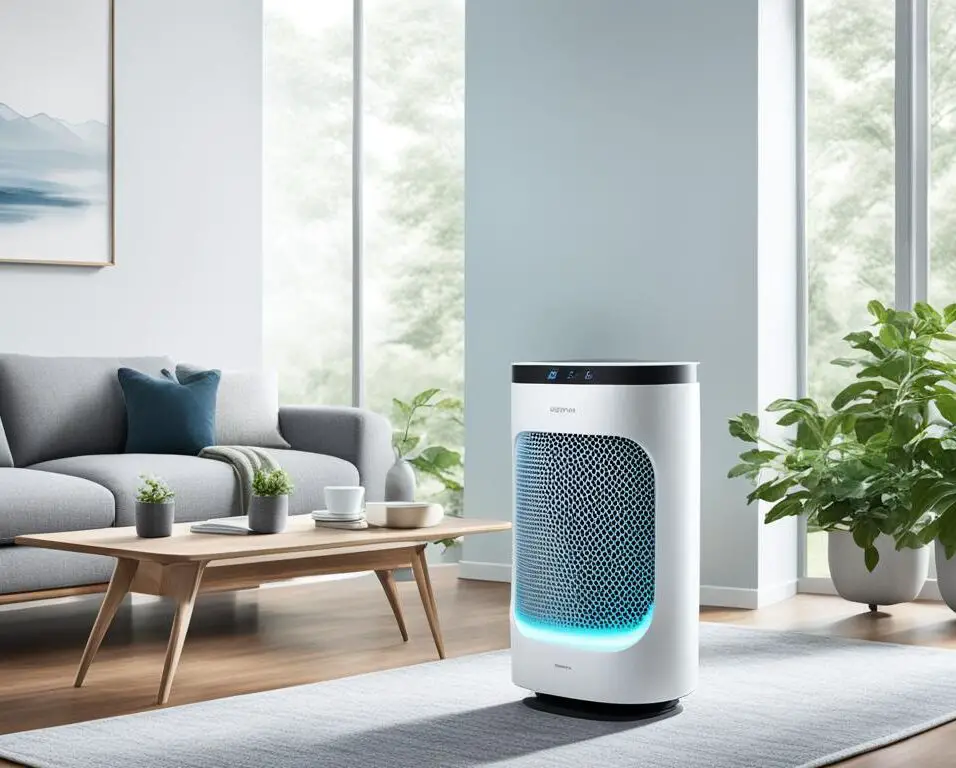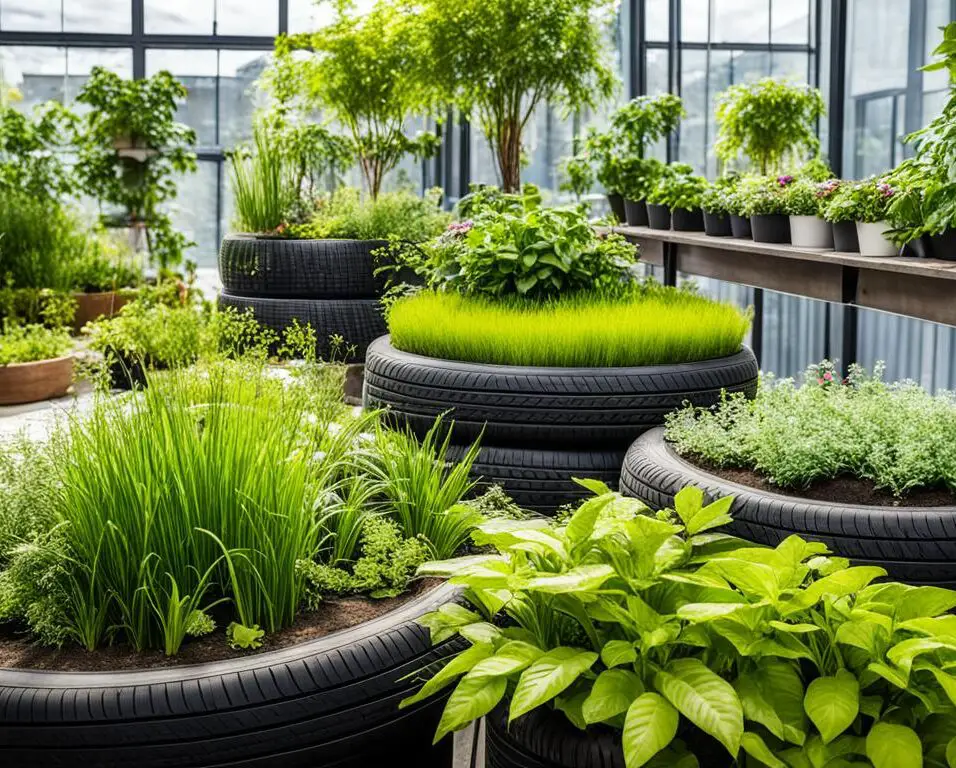A Home’s Soul: The Psychology of Biophilic Design in Residences
Biophilic design is an innovative approach to creating living spaces that embrace the beauty and tranquility of nature. As a professional journalist and copywriter, I have witnessed the growing popularity of biophilic design in homes, and it’s no surprise why. This design philosophy recognizes the inherent connection we have with the natural world and aims to bring that connection indoors.
By incorporating elements such as natural materials, colors, and textures, as well as introducing plants and maximizing natural light, biophilic design creates harmonious and inviting environments. These spaces have a profound impact on our well-being, both mentally and emotionally.
Key Takeaways:
- Biophilic design incorporates elements from nature into home interiors, promoting relaxation and well-being.
- Nature-inspired design can reduce stress, improve mood, and increase productivity.
- A well-designed home can serve as a sanctuary for mental and emotional wellness.
- Biophilic design allows individuals to express their personal style and connect with their identity.
- Sustainability is a key trend in biophilic design, with eco-friendly choices gaining popularity.
The Power of Nature-Inspired Design in Homes
Nature-inspired design in homes has a profound impact on residents’ well-being. Research has shown that exposure to natural elements, such as plants, sunlight, and natural materials, can have significant positive effects on mental health, emotional wellness, and overall well-being.
“Bringing nature closer to our living spaces not only enhances aesthetics but also has a transformative impact on our daily lives,” says Dr. James Matthews, a renowned psychologist specializing in environmental psychology. “Nature-inspired design creates a harmonious environment that promotes relaxation, reduces stress, and improves mood.”
Studies have found that incorporating nature-inspired elements into home decor can reduce stress levels and help individuals feel more connected to the natural world. For example, the presence of indoor plants has been shown to improve air quality, increase humidity, and promote a sense of vitality and well-being. The use of natural materials, such as wood and stone, creates a sense of warmth, grounding, and authenticity, which can have a soothing effect on residents.
“Nature-inspired design has the power to create a peaceful oasis within our homes,” explains interior designer Emily Collins. “By incorporating organic shapes, natural colors, and textures, we can create spaces that feel rejuvenating, uplifting, and connected to the beauty of the natural world.”
A key aspect of nature-inspired design is the use of natural light. Maximizing natural light exposure in living spaces has been linked to better sleep quality, improved mood regulation, and enhanced productivity. Design techniques like large windows, skylights, and open floor plans can optimize the flow of natural light, creating bright and airy environments that promote well-being.
The Benefits of Nature-Inspired Design:
- Reduced stress and anxiety
- Improved mood and emotional well-being
- Enhanced relaxation and sense of calm
- Increased vitality and energy
- Better sleep quality and regulation
- Boosted creativity and productivity
Bringing Nature Indoors
In addition to incorporating natural elements into home design, nature-inspired decor can also play a significant role in promoting emotional wellness. The use of soft, earthy colors, such as shades of green, blue, and neutral tones, can create a serene ambiance and evoke a sense of tranquility. Textures inspired by nature, such as woven fabrics, natural fibers, and wood accents, add depth and tactile appeal to living spaces.
“The key is to create a balance between functionality and nature’s aesthetic,” advises renowned interior designer Sarah Thompson. “By infusing nature-inspired design into our homes, we can create environments that nurture our well-being and uplift our spirits.”
| Nature-Inspired Elements | Well-Being Benefits |
|---|---|
| Indoor plants |
|
| Natural light |
|
| Natural materials (wood, stone, etc.) |
|
The power of nature-inspired design in homes lies in its ability to create a nurturing and comforting environment. By harnessing the beauty and tranquility of nature within our living spaces, we can foster a greater sense of well-being, mental health, and emotional wellness.
Creating a Sanctuary: The Role of Biophilic Design in Mental and Emotional Wellness
Biophilic design goes beyond aesthetics; it has the power to transform a home into a sanctuary that supports mental and emotional wellness. By incorporating elements from nature, such as natural light, plants, and organic materials, biophilic design creates a calming and nurturing environment that promotes well-being, making your home a refuge from the stresses of daily life.
The use of colors, textures, and patterns inspired by nature further enhances the sense of tranquility and harmony in your living space. Soft earth tones, calming blues, and vibrant greens can evoke a sense of peace and relaxation. Natural textures, such as wood, stone, and woven fabrics, add depth and authenticity to the design, connecting you to the natural world.
“Creating a sanctuary at home is crucial for maintaining mental and emotional well-being. Biophilic design allows us to bring the nurturing qualities of nature indoors, providing a space where we can recharge and find solace.”
Studies have shown that exposure to natural elements has significant benefits for our mental health. Natural light, for example, can regulate our circadian rhythms, improve mood, and increase productivity. Plants not only add visual appeal but also filter the air, reducing toxins and creating a healthier indoor environment. By incorporating these elements into our homes, we can create a sanctuary that nurtures our well-being.
Connecting with Nature Indirectly
Biophilic design also allows us to connect with nature indirectly, even in urban environments where access to green spaces may be limited. Through art, photography, or even wallpaper featuring natural landscapes, we can create the illusion of being surrounded by nature. This connection to the natural world can have a profound impact on our mental and emotional state.
Harmonizing Mind and Body
Biophilic design not only benefits our mental well-being but also our physical health. By creating a sanctuary within our homes, we can reduce stress levels, lower blood pressure, and improve sleep quality. The harmonious blend of natural elements and well-chosen decor helps create a space that fosters relaxation and rejuvenation.
Integrating Biophilic Design into Home Decor
There are various ways to incorporate biophilic design into your home decor. Start by introducing houseplants or a living wall to add a touch of nature to your living space. Consider using natural materials such as sustainable wood, organic fabrics, and recycled materials in your furniture and decor choices. Furthermore, let natural light flood into your rooms by using sheer curtains or skylights. These simple yet impactful changes can transform your home into a sanctuary of mental and emotional wellness.
Embrace the role of biophilic design in creating a sanctuary. By connecting with nature and incorporating its elements into your home, you can promote mental and emotional well-being, fostering a sense of peace and tranquility in your daily life.
Personal Expression and Connection to Identity Through Biophilic Design
Biophilic design offers a unique opportunity for residents to express their personal style and connect with their identity through home decor. It goes beyond mere aesthetics, allowing individuals to create a space that truly reflects who they are, their values, and what matters most to them. By incorporating elements from nature, such as natural materials, organic colors, and patterns inspired by the outdoors, biophilic design becomes a canvas for personal expression.
When it comes to biophilic design, every aspect of the living space has the potential to showcase individuality. From the arrangement of furniture to the choice of colors and the selection of decor elements, each decision serves as an external expression of internal values and beliefs. For example, someone with a deep connection to the ocean can incorporate seashells, shades of blue, and flowing textures to embody their love for the sea. On the other hand, a nature enthusiast may opt for earthy tones, leafy patterns, and natural wood accents, bringing the essence of the forest indoors.
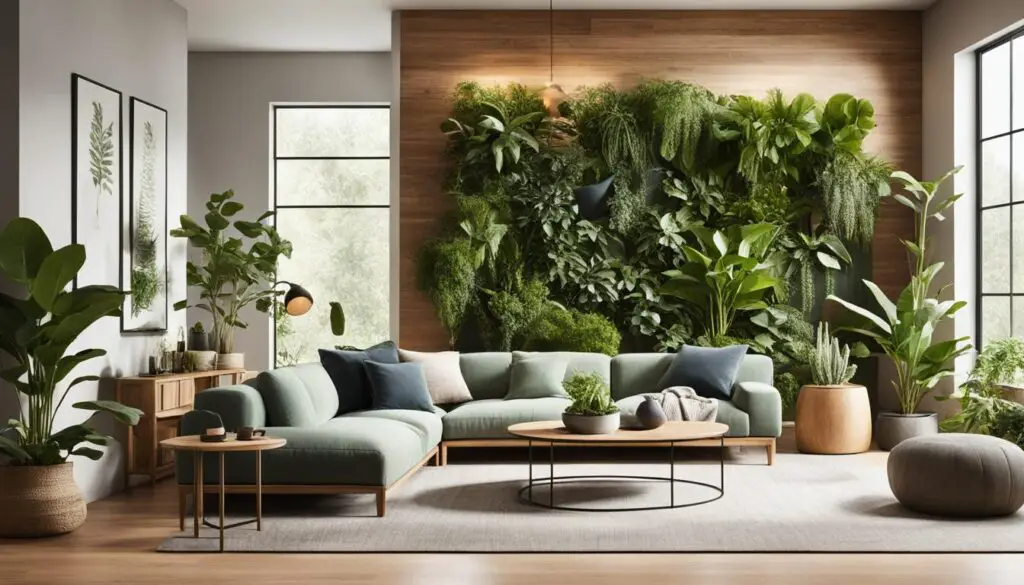
Customization and personalization are at the core of biophilic design. It allows individuals to curate an environment that resonates with their essence and fosters a deep connection to their surroundings. Whether it’s through the placement of beloved plants, the display of cherished natural artifacts, or the addition of unique handmade pieces, biophilic design provides endless opportunities to infuse a space with personal narrative and create a home that feels truly one-of-a-kind.
I believe that our living spaces should be a reflection of who we are. Biophilic design allows me to express my love for nature and embrace my identity through the decor choices I make. Every time I step into my home, I feel instantly connected to my surroundings and at peace with myself.
Incorporating personal expression and connecting with one’s identity through biophilic design not only enhances the visual appeal of a living space but also creates a sense of belonging. It instills a feeling of authenticity and fosters a deeper connection between individuals and their homes. Through biophilic design, residents are able to showcase their unique style, share their passions with others, and craft a living environment that truly feels like a reflection of who they are.
Trends in Biophilic Design: Embracing Nature and Sustainability
Biophilic design goes beyond bringing nature indoors; it also encompasses sustainability and eco-friendly choices. As environmental consciousness takes center stage, sustainable decor has become a leading trend in biophilic design. Brands are now offering chic options crafted from recycled materials and ethically sourced resources, enabling individuals to make eco-friendly choices without compromising on style.
One of the key trends in biophilic design is the integration of technology into living spaces. Smart home devices are being incorporated to enhance both the ambiance and energy efficiency of the environment. From automated lighting systems that mimic natural sunlight to energy-saving climate control solutions, these technological advancements complement the overall biophilic design concept.
Biophilic Design Trends:
- Sustainable chic: By using recycled materials and eco-friendly manufacturing processes, biophilic design promotes a sustainable lifestyle without sacrificing aesthetics.
- Tech-integrated living: The seamless integration of smart home devices, such as automated lighting and climate control systems, enhances the biophilic experience while improving energy efficiency.
- Artisanal craftsmanship: Celebrating the beauty of nature, biophilic design incorporates artisanal craftsmanship, showcasing the unique character and imperfections of natural materials.
These evolving trends in biophilic design reflect a growing awareness of the importance of both nature and sustainability in our living spaces. By embracing biophilic design principles and making eco-friendly choices, individuals can create homes that not only promote well-being but also contribute to a greener future.
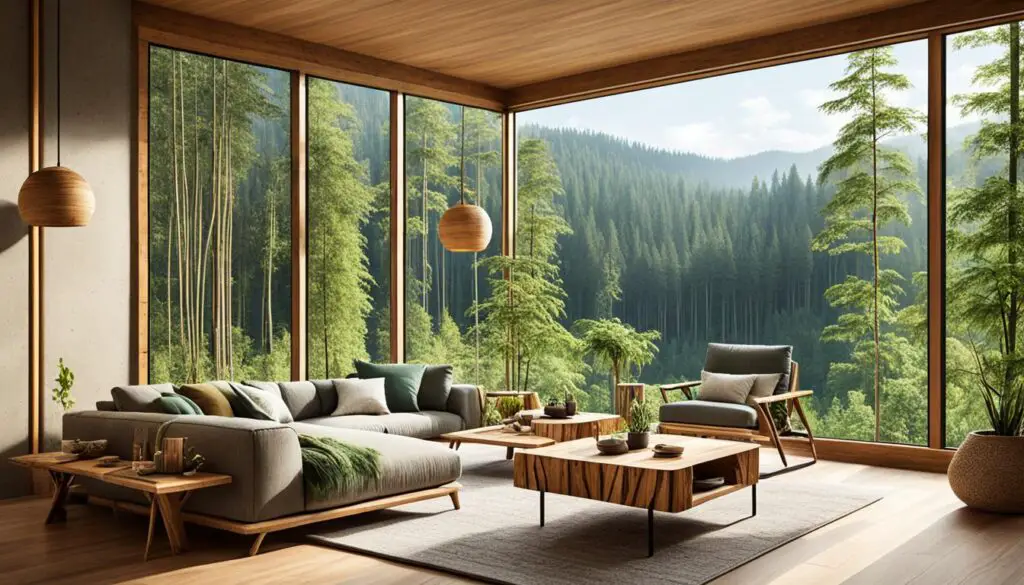
| Trend | Description |
|---|---|
| Sustainable chic | Using recycled materials and eco-friendly manufacturing processes to create stylish and sustainable decor options. |
| Tech-integrated living | Seamlessly integrating smart home devices to enhance both the ambiance and energy efficiency of the living space. |
| Artisanal craftsmanship | Showcasing the unique character and imperfections of natural materials through skilled artisanal craftsmanship. |
Conclusion
The integration of biophilic design principles into homes is an acknowledgment of our innate need to connect with nature. By incorporating elements inspired by the natural world into home decor, biophilic design not only enhances the aesthetic appeal but also has a profound impact on our well-being. It promotes mental and emotional wellness by creating a sense of calm and tranquility, providing a sanctuary for residents to unwind and recharge.
One of the remarkable aspects of biophilic design is its ability to foster a deep sense of connection and belonging. By allowing individuals to express their personal style and connect with their identity through decor choices, biophilic design turns a house into a home that resonates with its inhabitants. It creates a harmonious and nurturing living environment that not only reflects their values and beliefs but also evokes a strong affinity with the natural world.
As the popularity of biophilic design continues to rise, it is revolutionizing the way we approach home design. It goes beyond mere aesthetics and embraces a holistic approach that prioritizes our well-being, the environment, and our connection to nature. Biophilic design is reshaping the concept of a home, transforming it into a space that not only looks beautiful but also supports our physical, mental, and emotional health.
FAQ
What is biophilic design?
Biophilic design refers to the incorporation of elements from nature into the design of living spaces.
What is the psychology behind biophilic design in homes?
Biophilic design recognizes the deep-rooted human connection to nature and aims to enhance well-being by bringing nature indoors.
What is the impact of nature-inspired design on residents’ well-being?
Research shows that exposure to natural elements in homes can reduce stress, improve mood, and increase productivity.
How does biophilic design create a sanctuary within the home?
Biophilic design creates a calming and nurturing environment by incorporating elements from nature, such as natural light, plants, and organic materials.
How can biophilic design allow residents to express their personal style?
By incorporating elements from nature, individuals can create a space that reflects their unique identity and showcases what matters to them.
What role does sustainability play in biophilic design?
Sustainability and eco-friendly choices are important aspects of biophilic design, with brands offering chic options crafted from recycled materials and ethically sourced resources.
What is the psychology behind the need for a connection to nature in biophilic design?
Biophilic design enhances well-being, promotes mental and emotional wellness, and creates a sanctuary for residents to relax and recharge.
How is biophilic design reshaping the way we design our homes?
Biophilic design is redefining the concept of a harmonious and nurturing living environment, as it continues to grow in popularity.



